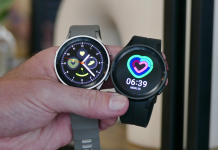Responsive web design makes sites adapt to any device. Adding it strengthens marketing results more in today’s mobile world. This article explores the key benefits responsiveness offers.
What Is Responsive Design?
Responsive design means a website automatically resizes itself to look good on all screen sizes. Text, images, buttons, and layout adapt whether a phone, laptop, tablet, or desktop views pages.
One website fits any gadget through “breakpoints” defining component sizing and positioning at various viewport widths.
Why Users Want Responsive Sites
People browse sites using:
- Laptops
- Phones
- Tablets
Visitors choose whatever device suits current situations. Responsive allows engaging anyone conveniently through that gadget already in hand.
Google Rewards Responsiveness
Google knows responsive sites better fit user needs. It ranks these sites higher in mobile searches compared to standalone mobile sites.
Responsive also avoids duplicate pages that can confuse search engines through duplicate content flags where URLs and page text overlap too closely.
Key Responsive Benefits
Responsiveness specifically helps marketing campaigns by:
- Increasing access opportunities through 24/7 mobile availability
- Building trust and credibility through modern design
- Reducing bounce rates by removing navigation barriers
- Capturing more contact data through optimized forms
- Spotlighting USPs consistently across gadgets
- Lowering site building and maintenance costs
Responsiveness checks several key boxes.
Mobile Responsiveness Is Mandatory
Over 60% of searches happen on smartphones. Not optimizing handhelds loses huge volumes of traffic.
Many visitors instantly leave non-responsive sites rather than pinch and scroll awkwardly. It feels outdated and frustrating.
Layout Changes At Breakpoints
As page widths narrow on smaller devices:
- Menus become mobile “hamburger” icons.
- The text widens to fit.
- Images and components stack vertically.
- CTAs and forms resize for tapping.
Breaking navigation, images, or calls to action ruins responsiveness.
Show Biggest Visuals First
Mobile connections can be slow to download pages. Showcase hero images and videos above the initial viewport first so these load immediately when users scroll down pages.
Sadly, many sites hide key content lower forcing mobile downloads of unnecessary stuff first.
Text Overlays On Images
Stack text over images to communicate messages using fewer images across page lengths. This saves loading times and visual space on little screens.
SetTextOnImages.com simplifies adding animated overlays.
Use Click Triggers
Click triggers make tapped elements appear using JavaScript without page reloads. They allow:
- Hidden navigation menus
- Pop-up contact forms
- Expanding content sections
- Overlaying videos
This adds dynamic effects and interactivity while avoiding awkward pinches/zooms to use features.
Simplify Navigation
Complex navigation overwhelms tiny mobile screens. Simplify menus to necessary pages only.
Use simple textual links instead of big graphical tabs. Consider putting secondary pages as Hamburger menus revealed by tap.
Consistent Branding
Colors, logo placements, icons, and style stay consistent regardless of device sizes. This maintains and reinforces brand recognition.
Fragmented mobile sites weaken familiarity as elements shift around separately on mobile.
Resize Images Without Stretching
Fully responsive images use CSS to resize without distortion across widths, conserving file size.
< picture > HTML tags also define multiple-size image files to serve up the best crispness for specific viewport dimensions.
Background Images Adapt
CSS defines background photo positioning as “center” to focus on the right area as blocks rescale proportionally. This selects the focal point.
Services like BackgroundBurner.com simplify building responsive backgrounds quickly.
Rethink Page Real Estate
Rearranging page elements suits smaller mobiles better:
- Most important content goes higher.
- Feature secondary content in expand/collapse sections.
- Very wide images size down or get removed.
- Consider vertical orientation.
Evaluate content priorities when determining layout adaptations.
Use Flexible Image Sliders
Image sliders and rotating banners often break visually on variable screens. Flexible sliders like Slick Slider and Swiper reshape themselves responsively while advancing images smoothly.
Mobile-First Design
“Mobile-first” means designing starts for phones and then enhances upwards. This mobile-centric perspective ensures critical elements work flawlessly for most of the traffic on handhelds first rather than desktop users.
Many sites are still built for desktops initially then cram things down losing effectiveness for most visitors’ situations.
Fast Mobile Page Speeds
Faster mobile page load speeds keep visitors. Optimizations like compressed image file formats, minimal HTTP requests, browser caching of assets, and optimized code lower frustration.
Legible Mobile Typography
Tiny screens demand optimized typography and line lengths for readability:
- 16 pixels for body text
- 150-character line length maximums
- 2.5-line height for spacing
- Strong visual hierarchy
Vary fonts and weights to differentiate headings from paragraphs.
Mobile-Friendly Forms
Tapping tiny form fields annoys visitors and hikes exit rates. Simplify sign-up processes:
- Pre-fill data where possible
- Use checkboxes over long select lists.
- Bigger touch targets for radio buttons and fields
- Clear error messaging
Test filling forms across devices to improve usability.
Personalized Experiences
Responsive allows tailoring content and offers to individual situations and preferences thanks to device detection and behavioral tracking in analytics.
Show content suited for smaller attention spans on mobiles vs deeper analysis tools on desktops fitting contexts better.
Include social media
Integrate social sharing buttons responsively so mobile visitors easily spread messages to networks. Include counters showing previous shares as social proof.
Consistent Calls-To-Action
Calls-to-action directly influence desired responses across devices. Maintain button placements, sizes, and colors suited to prompting clicks on any display.
For example, keeping email submission forms visible despite smaller screens through sticky menu options.
Geotargeting In Responsive
Geolocation tools pinpoint visitor positions, allowing the displaying of location-relevant content or offers in the moment. This contextual relevance and timing boosts conversions.
Device-Based Redirection
Redirect website visitors to specific pages based on whether on mobile or desktop. Send mobiles straight to conversion-oriented locations due to shorter attention spans. Redirect desktops to expanded content when extra details suit needs better.
Tracking Traffic Sources
Analytics reveal the traffic sources and posts driving responsive site visitors. Further, optimize those spots for more conversions.
Google Analytics details channel breakthroughs plus consumer electronics interests driving buyers. Tailor messaging and products accordingly.
Ongoing iterative Testing
Regular A/B testing of page variations uncovers incremental responsive improvements over time. This constant refinements approach beats big redoes for constant lift.
Conclusion
Responsive web design’s adaptive capability suits the full range of visitor access points from mobile to desktop seamlessly. It removes limitations while conveying quality impressions and convenience that earns trust.
Combined with analytics to target nuanced tailored experiences, responsiveness allows engraining into daily habits through personalized, everywhere availability — building customer lifetime value and loyalty substantially.








